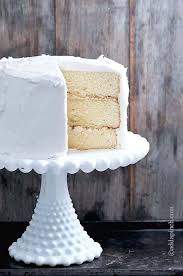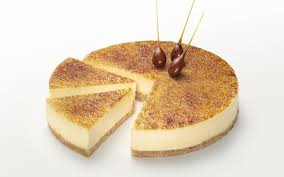
Cheesecakes
Cheesecake is known for its firm, but creamy texture and the unmistakable taste of cream cheese. There are three basic cheesecakes popular in the USA: 1) New York Cheesecake, 2) French cheesecake, 3) Classic Cheesecake and No-Bake Cheesecake.
Any cheesecake a much loved dessert plain or as the basis for a myriad of flavored, decadent cheesecake desserts. You will see some of my favorite cheesecake flavors linked on this page. Cheesecake is also used as a layer in many entremets.
Read on to learn the essentials of making cheesecakes.
CREAMING THE CREAM CHEESE
Whip the the cream cheese and granulated sugar together in a stand mixer with a paddle on medium-high speed until the mixture is smooth and creamy.
NEXT STEPS
Sour cream and flavors always come next, then the eggs.
HOW TO ADD EGGS
Whip the eggs by hand and mix them in 1 tbsp at a time on medium. Mix just enough to incorporate each portion before adding another. Mix just enough-not too much. Over mixing will cause the cheesecake to deflate and crack when baked.
USE THE RIGHT PAN AND PREPARE IT CORRECTLY
Bake cheesecake in a springform pan. Very lightly grease the sides and bottom of the springform pan. Place a round of parchment paper on the bottom and then apply parchment to the sides. The light coating of grease helps hold the parchment in place. The parchment on the sides must extend up beyond the upper edge of the pan.
The springform pan will release and then you pull the paper off from around the cheesecake. This way you don't damage your cheesecake an dit is really too light and delicate to go filling the pan over like you would a regular cake.
PUTTING THE BATTER IN THE PAN
1. Pour the batter into the pan
2. Smooth over the top with a spatula or frosting knife.
3. Tap the pan on the countertop a couple of times to release any bubbles. If you see any on the surface after that, pop them, then tap again to smooth the surface.
BAKE THE CHEESECAKE IN A BAIN MARIE
Materials: a second cake pan or aluminum foil and a baking or roasting pan with a high side.
You will need a pan just large enough to hold the springform pan. For instance if I am using an 8" springform pan for my cheesecake, I will use a 9" or 10" regular round cake pan with 2" side to put the springform pan in.
An alternative to this second pan is aluminum foil. Set the springform pan in the foil and make a 2" side to contain the springform pan. Or Roll the foil toward the pan and wrap around the sides - like an extra layer of insulation.
The purpose is to prevent water from the bain marie from getting into the cheesecake. Foil wrapped under the springform pan and pressed on the sides can also prevent batter from leaking out of the bottom of the springform pan.
You will need a baking or roasting pan or you could use a cake pan. It just needs to be large enough to fill with water that comes about halfway up the springform pan.
1. Place the large baking/roasting pan on the middle or low middle rack of the oven
2. Place the springform pan with cheesecake in the middle of the large pan.
3. Fill the large pan with boiling water and start the bake.
Note: Pour the water into the pan slowly at the edge because you must not splash any into the cake batter.
Note: I put a large baking sheet on the bottom rack or bottom of the oven. This will catch any batter or water 'just in case.' I also find that the extra layer beneath helps prevent over browning on the bottom of whatever you are baking.
4. BAKE
Bake on 350F for 1 hour - then turn off the oven, but don't remove the cheesecake from the oven!
5. THE COOL DOWN
The cheesecake must change temperature gradually. So you don't want to take it out of a hot oven to room temperature. You want to gradually bring it down to room temperature, otherwise it might sink or crack.
With the cheesecake still in the oven, then turn off the oven and crack the oven door about 4 inches and leave it for 1 hour.
I like to open the oven door all the way and leave it for another hour.
Then you can set it on the countertop on a colling rack and let it cool all the way to room temperature.
When it reaches room temp in the kitchen, I like to move it away from the heat and humidity of the kitchen. I put it on the dining room table on the cooling rack and let it cool to a 'cool' room temp.
6. REFRIDGERATE
With the cheesecake still in the springform pan, cover the top of the cheesecake with a buttered round of parchment paper, then plastic wrap touching the parchment and the pan to protect it from air drying. Then put the cheesecake in the refrigerator to chill for 3 hours before serving.
SERVING
Remove the cheesecake from the refrigerator, remove the plastic wrap and parchment paper. Unfasten the springform pan. Remove parchment from the sides of the cheesecake. Slide the cheesecake on the parchment off the springform pan bottom. Put the cheesecake on its parchment onto a cake board or cake board with a doily. With the cheesecake on the cake board you can easily display it on a serving tray or store it in the refrigerator or freezer.
STORING
Cheesecake will keep for a week (5-7 days) in the refrigerator. Store the cheesecake covered with plastic wrap in the refrigerator. Make sure the cheesecake is wrapped in plastic wrap touching its surfaces all around to keep air out. If you have a plastic cake keeper for storing your cake that is fine, but still wrap it in plastic to protect it from the air inside the container.
Cheesecake can be frozen and will still be at the same quality for up to 2 months.
THE CRUST
Mix the dry ingredients and butter in a food processor to make sure it is all well and evenly blended. Put the crust mixture into the pan and press along the sides first, then the bottom. For an even crust, press the mixture into the pan with a straight-sided glass. Press the side before the base to keep the corners even, too.


